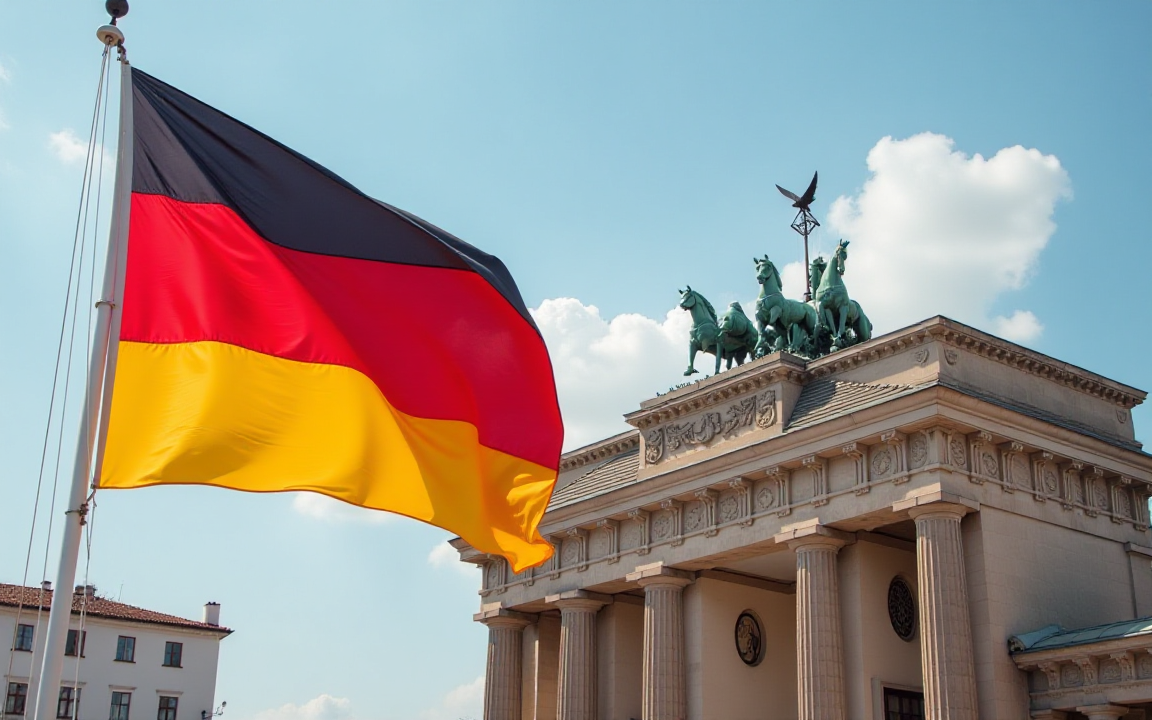What happens when the factories that are powering Europe’s biggest economy start shrinking? When an export-based economy stops exporting?
The continent’s manufacturing engine is now facing both as Germany’s industrial output is shrinking.
After years of near-constant expansion, the country’s core industries are now caught in a structural slowdown that feels different from the usual cyclical dip. The numbers show a pattern that concerns both investors and policymakers.
A clear downturn in the data
Germany’s industry is shrinking. Industrial production in August fell by 4.3% from the previous month, one of the steepest drops since the pandemic. It also widely exceeded analyst’s expectations.
The decline was led by energy-intensive sectors such as chemicals and metals, which remain far below pre-2020 levels. New manufacturing orders also fell again, down 0.8% month-on-month.
The issue is that exports are hardly helping. Shipments abroad dropped 0.5% in August and were flat in the first half of 2025 compared with a year earlier, according to Destatis. The trade surplus still exists, but it is thinner than before.
The damage is spreading to the workforce. Around 245,000 industrial jobs have disappeared since 2019, with employment in core manufacturing now falling nearly 3% year-on-year. Fewer factories mean fewer jobs, and fewer jobs mean weaker demand at home.
Even Germany’s quarterly GDP shows the strain, with output falling by 0.3% in the second quarter, confirming that the slowdown is not just in sentiment surveys but in the real economy.
Purchasing managers’ indices hint at stabilization, with the latest HCOB manufacturing reading close to 50. But one strong month does not offset the persistent weakness seen since 2022.
In reality, German factories are producing less, exporting less, and booking fewer new orders.
China turns from engine to headwind
For two decades, China was the growth lever that pulled German industry forward. Exports of cars, machinery, and chemicals to the Chinese market became a cornerstone of the country’s prosperity.
But that link has been reversed. German exports to China dropped around 14% in the past year, and the bilateral trade deficit has reached record levels.
China has moved up the value chain. Its carmakers and machinery firms now compete directly with German brands, often at lower prices. The surge of Chinese electric vehicles in Europe underscores that shift.
Meanwhile, demand inside China is weak. Investment has cooled, and the property slump has cut demand for imported machinery and industrial equipment.
The result is a mismatch. Germany still imports huge volumes of electronics, components, and consumer goods from China, with imports worth roughly €165 billion over the past twelve months. But exports have slipped to about €82 billion. The trade gap has widened to the largest on record.
The United States has overtaken China as Germany’s top trading partner, but that is more a sign of lost momentum in Asia than a sign of booming sales elsewhere.
Factories running out of steam
The slowdown is not only about trade. It is rooted in the fabric of Germany’s industrial model. High energy costs have eroded the competitiveness of energy-intensive producers.
Chemical companies have been the foundation of German manufacturing, and they are now reporting the lowest capacity use in three decades. BASF, the largest of them, has scaled back investment at home and warned of weaker profits.
The biggest part of the 245,000 lost jobs are coming from the chemical industry.
Machinery and automotive producers face a different problem, which is demand fragmentation. Chinese firms are producing more of their own industrial equipment, while global competition in electric vehicles has intensified.
Orders from abroad are shrinking, and domestic investment has failed to fill the gap. The pipeline of foreign orders, which is a key measure of future output, has edged lower for months.
These are not short-term dips. They reflect the weight of structural costs, slow innovation in certain segments, and an energy transition that raises expenses before it delivers savings.
The industrial economy that once ran on precision and efficiency is finding it harder to adjust to global shifts in cost and demand.
Europe feels the drag
Germany’s weakness spreads through the continent. Central and Eastern European countries tied into its supply chains are already seeing slower orders. A weaker Germany means slower intra-EU trade, subdued investment and more pressure on the European Central Bank to tread carefully on rates.
Berlin’s room to respond is narrow. Fiscal rules limit large-scale stimulus even as voters grow restless. With the AfD gaining in industrial regions and business confidence sliding again, political pressure to deliver results is building fast.
Searching for a new industrial rhythm
Germany’s problem is not only weak demand but also the erosion of its traditional advantages. Cheap energy is not available anymore, labour is scarce, and the green transition requires massive investment before it can lower input prices. An aging workforce doesn’t help things either.
The government’s answer has been a mix of tax incentives for green industry, looser migration rules, and selective subsidies. But these steps have not yet revived confidence. Companies continue to invest abroad, chasing lower costs and more predictable regulation.
Industrial leaders complain of slow bureaucracy and rising labour costs, while smaller manufacturers ay survival now depends on cutting staff or moving production abroad.
Chancellor Friedrich Merz has promised an “autumn of reforms”, echoing the early-2000s overhaul that once transformed Germany into an export powerhouse.
But his coalition partners are split over how far to go. Business groups argue that minor corrections are no longer enough, warning that factories cannot wait for political compromises while competitors in the US and Asia scale up.
Unless production, jobs and exports start growing together again, the country that built the world’s export machine risks becoming its maintenance shop.
The post How bad is Germany’s industrial slowdown? appeared first on Invezz

